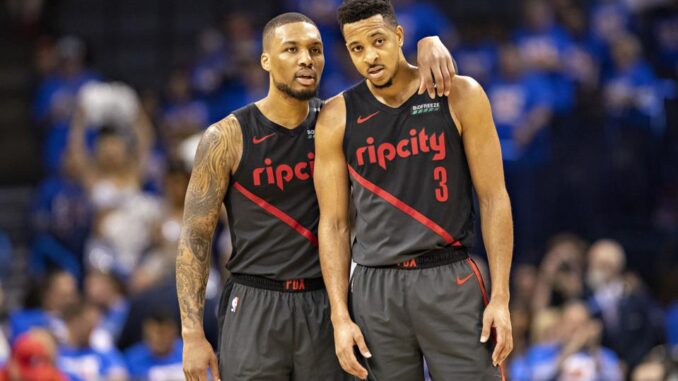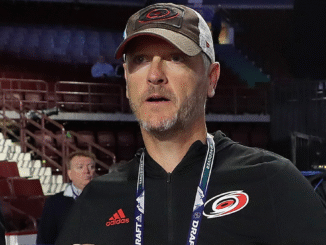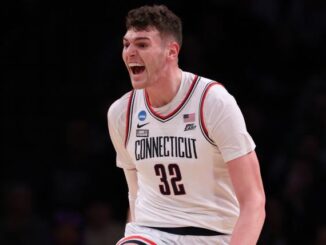
The NBA is getting ready to enter the stretch of this weird 2021 season, the time during a normal season that would determine who are the teams that no one wants to face during the playoffs. Last year, the Miami Heat scorched the bubble tournament and used that momentum to absolutely level every Eastern Conference team on their way to reaching the NBA finals as a fifth-seed. This year is different in that the number of top 20 players in the league injured is astounding due to the shortened offseason and condensed schedule. It has left teams that have avoided such misfortune to become “spooky.” The Utah Jazz and Phoenix Suns have ridden healthy rosters to the top seeds in the West, the Memphis Grizzlies have remained astoundingly consistent, and even the New York Knicks (THE KNICKS!) are knocking on the door of home-court advantage, which is why it’s concerning that the Portland Trail Blazers are not in that position. While some might point to injuries to Jusuf Nurkic and CJ McCollum, both players are now healthy and played prominent roles in Portland’s worst stretch of the season, having lost 10 of their last 15 games. No, injuries are not to blame for the reason why they are now feeling breath on the back of their necks of all the “play-in” teams behind them. Rather, it’s the failure of the new players that have been brought in to integrate with the existing corps and a steep drop off from their superstar Damian Lillard.
The biggest concern has been their small forward spot, where Neil Olshey just hasn’t been able to find an answer. He signed Derrick Jones Jr. with the idea that his defensive versatility could help transform the Blazers on that end. Coach Terry Stotts believed his athleticism could help them switch up their defensive scheme, but after a very poor defensive showing early on, Stotts switched back to his tried-and-true drop system. This left DJJ mainly on the perimeter, trying to seal holes that defensive sieves Enes Kanter and Damian Lillard left open. He ultimately failed and has found himself unable to get off the bench in recent weeks.
After the DJJ rollercoaster that consumed the small forward position during the first half of the year, the Trail Blazers made a bold move before the trade deadline. Olshey decided to deal the promising Gary Trent Jr. for veteran stalwart Norman Powell. The bet was to replace Trent’s plus shooting with a player hitting a similar amount of threes (43.9%) while also providing an upgrade on defense and at-rim finishing. The risk, though, was Powell was in the midst of a career season, hitting highs in points per game (19.6) and effective field goal percentage (60.2%). Would Powell be able to keep up that torrent pace beside two dominant guards while also helping out the defense? On the offensive end, at least, the answer has been no. His three and two-point percentages have hit career lows, 33.0% and 52.8%, respectively. His shift from SG to SF has not gone swimmingly on the other end either, as the Trail Blazers are -7 points per 100 possessions when Powell has been on the court for them. He’s been a far cry from the panacea the Blazers were hoping for.
Terry Stotts’ most recent experiment has been giving street free agent Rondae Hollis-Jefferson playing time with the starting unit. Hollis-Jefferson was available for free this far into the season for a clear reason. He’s a ZERO on the offensive end. His career shooting splits are 21.2% from three and 47.2% from two. Those same issues have persisted on the Blazers, as he’s taken one three all season and shooting 40% total from the field. While he’s a versatile defender, Portland would essentially be playing 4-on-5 on offense when RHJ is on the court.
Even with all of that considered, the small forward position has been a mess since they lost Wes Matthews to injury in 2015. What’s really been killing them recently has been a dip in Damian Lillard’s scorching hot form. He’s only scored more than 30 once in the past 15 games, was forced to miss three games, and has been notably poor late in the 4th quarter. While the grand totals during this rough stretch of games haven’t been too alarming, 22.25 ppg and 41% from three, his on-court impact hasn’t been the same. If you throw out the last two games, he was -22 for that 13 game run. While the team as a whole rebounded around him in their last two wins, he still only scored 23 points each game. It shows that Lillard cannot be anything less than superhuman for this Blazers’ team to be successful consistently.
The Portland Trail Blazers are currently on the outside of a top-six seed, meaning they are currently looking to play at least one play-in game to make the playoffs. While they are a far cry from their self-proclaimed title hopes from before the season, they are at least in somewhat of a better position to advance. The aforementioned Jazz and Suns are very good teams, but neither has the superstar quality of the Lakers or Clippers. Getting a 1 vs. 8 or 2 vs. 7 matchup could give them a much better shot of advancing. Still, though, this roster has been clearly not good enough to make it past the second round and leaves Portland’s long-term future in question as the rest of the roster is still way too reliant on Dame to carry them.



